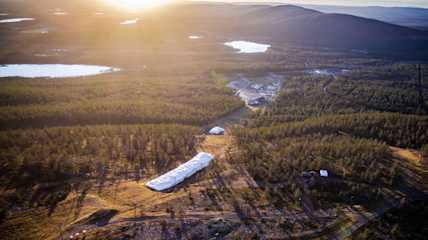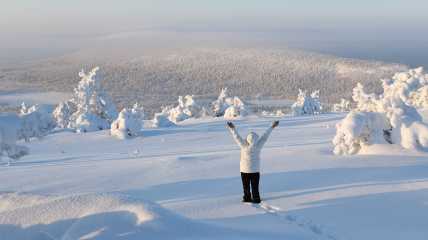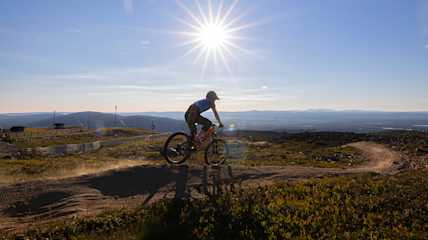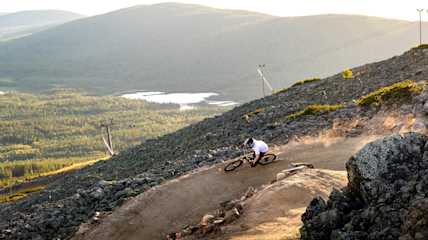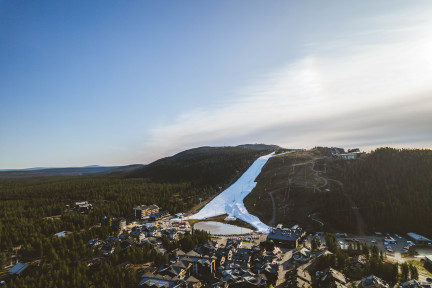
Preserved snow guarantees long winter season
Preserved snow has become an important part of the snow infrastructure for Levi Ski Resorts. With the help of preserved snow, we can offer our customers the opening of the skiing and cross-country skiing season as early as October. At the beginning of the season, the Front Slope will serve both skiers and alpine groups, as well as freestyle enthusiasts. The skiing and cross-country skiing season continues all the way to mid-May.
Preserved snow was introduced at Levi in 2016 in order to ensure snow for the Levi World Cup and that the event can be held. The first snow storage piles on the Levi Black slope were made in the spring of 2016 and everything went as expected. A couple of weeks before the race, the preserved snow was spread on the slope and the race was pulled through with great success. The ski resort learned a lot from the first year’s snow preservation. The location of the snow piles on the slope was changed the following year, and at the same time, the study of the protective cover of the snow piles began. What kind of protective cover would prevent the snow from melting even less?
Today, in addition to the Levi World Cup, the ski resort also stores snow at the Font Slops and at the Northeast Slopes for the skiing and cross-country skiing opening, which is at the beginning of October. Preserved snow is also be utilized in June when the Summer Park will serve freestyle skiers at the Gondola Lift.
Snow preservation technology
The snow is made in late January / mid-February with snow cannons when the temperatures are as cold as possible. This minimizes the need for water and energy. After this, the snow is spread on the slope and for safety reasons, a little over the slope, so that no steep walls form on the slope.
After May Day, when the ski resort closes, snow is collected from the slope using snow cats in large piles across the fell. The excavator shapes the sides of the piles to make them faceted, compact packages. After this, the covering starts.
In the early years, the snow piles were covered with thick construction fabrics. The white, sun-reflecting covers were a cost-effective solution, as they could be reused and were environmentally friendly. As snow preservation technology advanced, the ski resort invested in new storage covers in 2020. The new system, based on Finnfoam insulation, has had significant ecological and economic benefits due to its superior insulating performance.
When autumn and cool weather come, the covers are removed from the snow piles using an excavator and its blade roller. It takes about half a day to open one pile of preserved snow. The snow covers are stored in rolls to wait until next spring. Snow piles are spread on the slopes and on the cross-country ski track with the help of snow cats. It takes about a week to spread all the preserved snow.
The environmental perspective of snow preservation
Preserved snow significantly reduces the need for early-season snowmaking, helping to lower both water and energy consumption. This saves a large amount of both water and energy when snowmaking with snow cannons begins.
Read more about the secret of snow.
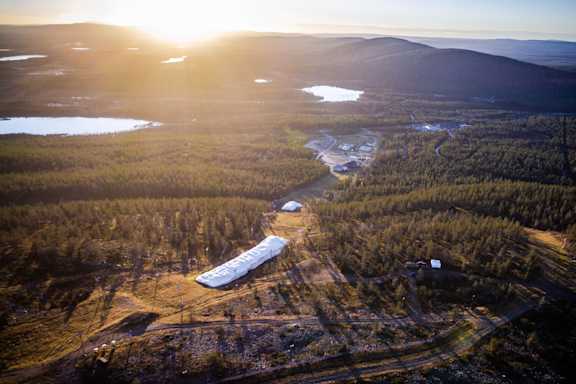

Development of the amount of preserved snow in Levi:
In the spring of 2016, 30,000 cubic meters of snow were stored on the Levi Black slope for the first time for the World Cup Levi.
In the spring of 2017, the ski resort preserved snow of 40,000 cubic meters for the World Cup Levi.
The amount of snow preserved for the 2018/2019 season increased to 70,000 cubic meters when the snow storages were extended to the Front Slopes as well so that the skiing season could start as early as October.
For the 2020/2021 season, 150,000 cubic meters of snow were preserved for the opening of the October skiing and cross-country skiing season and for the World Cup Levi. The snow piles were located on the Levi Black Slope, the Front Slope, and the Northeast Slope.
In the spring of 2022, the volume of the preserved snow was a total of 145,000 m3. The snow piles were located on the Levi Black Slope, the Front Slope, and the Northeast Slope.
In the spring of 2023, the volume of the preserved snow was a total of 200,000 m3. The snow piles were located on the Levi Black Slope, the Front Slope, and the Northeast Slope.
In the spring of 2024, the volume of the preserved snow was a total of 260,000 m3. The snow piles were located on the Levi Black Slope and the Front Slope.
In the spring of 2025, the total volume of preserved snow was 278,000 m³. The snow depots were located on the Levi Black Slope, the Front Slope, and the Northeast Slope.

